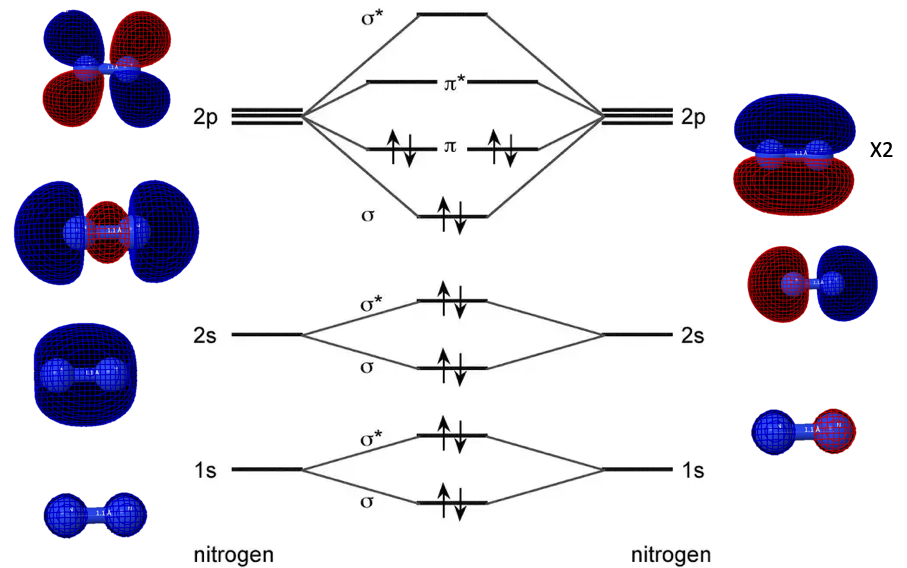Once the molecule file is fully loaded, the image at right will become live. At that time the "activate 3-D" icon ![]() will disappear.
will disappear.
Diatomic Nitrogen
Introduction:
Nitrogen exists as a highly stable gas and is a diatomic molecule that makes up much of the Earth's atmosphere.1
The molecular orbital (MO) diagram for diatomic nitrogen is displayed below:

MO 7 displays nitrogen's
highest occupied molecular orbital. This is where two electrons reside
in the ground state. Nitrogen's two 2pπ are degenerate (as seen in the
molecular orbital diagram above), meaning that they exist at the same
energy level.
MO 8 displays nitrogen's lowest
unoccupied molecular orbital. When an electron is excited, it can leave its ground
state orbital (2pπ) and often temporarily occupy this orbital which is in an antibonding configuration.
Nitrogen's bond length was
calculated to be 1.1 Å. A DZV basis set provided an accurate bond
length to literature values.2 Because the molecule is linear, a bond
angle of
180° is present between the two atoms. A triple bond exists between
them as predicted by Lewis structure analysis and the molecular orbital
diagram.
Nitrogen gas has no
electrostatic potential, partial charge, or dipole moment. It is a symmetric molecule and
the electrons are generally shared evenly between the atoms because
they have the same electronegativity. However, a stretching vibration
does exist.
1. PubChem; Bethesda, MD; Nitrogen Compound Summary; https://pubchem.ncbi.nlm.nih.gov/compound/Nitrogen (accessed October 9, 2019).
2. House, J. E.; House, K. A. Descriptive Inorganic Chemistry, 3rd ed.; Academic Press: Cambridge, 2015; 13.1.
Page skeleton and JavaScript generated by the Export to Web module of Jmol 14.29.46 2019-06-03 12:50 on Oct 3, 2019.
If your browser/OS combination is Java capable, you will get snappier performance if you use Java
